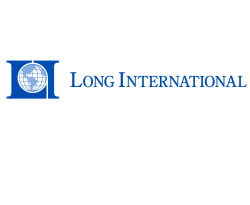1. INTRODUCTION
1.1 PURPOSE
Long International and other experts are often called upon to testify during mediations, arbitrations, and court cases on the impacts of deficient Project Management performance that have occurred during the execution of construction projects. These impacts may have been caused by either party to a Contract, i.e., the owner or the contractor, or, sometimes, a subcontractor or supplier.
The purpose of this paper is to provide an explanation of the methodology and resources that Long International uses to arrive at its opinions on allocation of the responsibility for various problems, and the impact of those opinions on the parties’ entitlement to damages or extensions of the time of performance allowed under a Contract.
1.2 WHAT IS A CONSTRUCTION PROJECT?
For the purposes of this paper, we will define a “Construction Project” by drawing on the Project Management Institute’s (PMI’s) definition of a “Project” from the Guide to the Project Management Body of Knowledge (PMBOK® Guide),1 from PMI’s further discussion of the uniqueness of construction projects provided in the “Construction Extension to the PMBOK® Guide,”2 and from Long International’s experience.
PMI defines a “Project” as a “temporary endeavor undertaken to create a unique project or service.” PMI then provides examples such as “developing a new product or service,” “effecting a change in structure, staffing or style of an organization,” “constructing a building or facility,” and others.3
In the Construction Extension to the PMBOK® Guide, PMI expresses the uniqueness of construction projects:
- Construction projects produce a facility that will make or house the means to make a product or provide service facilities such as dams, highways and parks.
- They deal with geographical differences and natural events
- They may have a significant effect on the environment.
- They involve a team of hired specialists in design and construction disciplines.
- They involve many stakeholders, such as environmental and community groups.
- They require large amounts of materials and physical tools to move or modify those materials.4
Construction projects are also prime examples of projects that require progressive elaboration. According to PMI:
Progressive elaboration is a characteristic of projects that integrates the concepts of temporary and unique. Progressive elaboration means developing in steps, and continuing in increments.5 For example, the project scope will be broadly described early in the project, and made more explicit and detailed as the project team develops a better and more complete understanding of the objectives and deliverables. …
Progressive elaboration of a project’s specifications needs to be carefully coordinated with proper project scope definition, particularly if the project is performed under Contract. When properly defined, the scope of the project – the work to be done – should be controlled as the project and product characteristics are progressively elaborated. …6
PMI further provides an example of progressive elaboration by referring to the development of a chemical process plant:
Example 1: Development of a chemical process plant begins with process engineering to define the characteristics of the process. These characteristics are used to design the major processing units. This information becomes the basis for engineering design, which defines both the detail plant layout and the mechanical characteristics of the process units and ancillary facilities. All of these result in design drawings that are elaborated to produce fabrication and construction drawings. During construction, interpretations and adaptations are made as needed and subject to proper approval. This further elaboration of the characteristics is captured by as-built drawings, and final operating adjustments are made during testing and turnover.7
The discussion about progressive elaboration is important, especially for construction projects, because the elaboration steps are carried out over an extended period of time, often for years on large projects. One of the challenges that Project Management faces in this regard is to maintain the consistency of the project’s scope throughout project execution. This challenge continues through all the phases of the project life cycle.
The life cycle phases of a construction project, using an Engineering, Procurement, and Construction (EPC) Contract as an example, typically include:
- The Conceptual Phase, including the owner’s development of the project’s first goals, design concepts, initial design calculations, and order of magnitude cost estimates, identification of financing mechanisms, taking the pulse of the public and regulatory agencies on the concept, etc.
- The Preliminary Phase (sometimes called the basic design phase), including preliminary design calculations and preliminary plot plans and basic design drawings, development of permit packages and filing major permit applications, development of a contracting strategy, obtaining approval of major financing, ordering of long-lead-time equipment, and development of an EPC Contract and bid package.
- The Bid Phase (or Contracting Phase), including identification of qualified bidders, solicitation and analysis of bids, clarification of the bids, and negotiation and award the EPC Contract.
- The EPC (or Execution) phase, including all detailed engineering, procurement and construction activities, Project Management activities identified as the contractor’s responsibility, pre-commissioning and startup activities, and possibly commissioning and initial operations activities.
- The Commissioning and Initial Operation phase, if not included above.
- The Warranty period.
Construction projects may develop grass-roots facilities, or they may remodel, refurbish, or expand existing facilities. Routine maintenance operations may also be combined with construction projects.
1.3 WHAT IS PROJECT MANAGEMENT?
Again, we will rely on PMI to provide our starting point for a definition of Project Management.
Project Management is the application of knowledge, skills, tools, and techniques to project activities to meet project requirements. Project management is accomplished through the application and integration of the project management processes of: initiating, planning, executing, monitoring and controlling and closing. The project manager is the person responsible for accomplishing the project objectives. Managing a project includes:
- Identifying requirements
- Establishing clear and achievable objectives
- Balancing the competing demands for quality, scope, time and cost
- Adapting the specifications, plans, and approach to the different concerns and expectations of the various stakeholders.
…
It is important to note that many of the processes within Project Management are iterative in nature. This is in part due to the existence of and the necessity for progressive elaboration in a project throughout the project life cycle. That is, as a project management team learns more about a project, the team can then manage to a greater level of detail.8
We also recognize that there are other definitions, some of which refer to Project Management as a “set of principles,” but other definitions generally use somewhat different phraseology to say the same thing.
2. THE IMPORTANCE OF SOUND PROJECT MANAGEMENT PRACTICES
The application of sound Project Management practices provides construction project stakeholders with the means to meet their objectives. These include ensuring that the project, i.e., the building or facility is:
- Constructed to meet its intended purpose, and only its intended purpose;
- Constructed to meet the level of quality that was intended;
- Completed when it is supposed to be done;
- Completed for its intended cost; and
- Completed safely and while protecting the environment.
The lack of sound Project Management by owners or contractors on projects leads to construction delays and extra costs for both parties. In addition to the problems that occur during construction, poor Project Management can also result in a completed facility that fails to meet the specified quality and suitability of materials, fails to produce the intended products, or cannot be operated for its intended life. This usually results in claims from contractors and counterclaims from owners, or vice-versa depending on who decides to sue whom.
In Long International’s experience, reasons for project failure that are often cited during disputes include:
- The failure of the Project Management team to adequately plan the work, or, when a plan is developed, to properly execute that plan.
- The failure to provide adequate human resources, staff or direct labor, to the project.
- The failure to develop adequate project schedules, or to maintain those schedules throughout project execution.
- The failure to control costs and changes throughout the execution of the project.
All of the above can be attributed at some level to inadequately trained or under-resourced Project Management teams.
In today’s business environment, the application of sound Project Management principles on a project is not only the means to the ends listed above, but, during disputes, can also provide a level of defense against alleged management deficiencies that resulted in delays and additional costs. Demonstrating that you used sound Project Management practices, and that the other party did not, can help your side win disputes.
3. PROJECT MANAGEMENT REQUIREMENTS STATED IN THE CONTRACT
Project management requirements are usually prescribed in major engineering and construction Contracts, particularly in large EPC and Lump Sum Turn Key (LSTK) Contracts. These Contracts typically state each party’s Project Management duties. These duties include requirements for development, review, approval, and implementation of:
- General Project Execution Plans and additional detailed supporting plans for each management area
- A statement of the Scope of Work for the Project
- Scheduling requirements naming the types and frequencies that various schedules must be produced and how they are to be updated
- Change Control
- Cost control and reporting
- Quality management
- Staffing and hourly labor manpower levels
- Performance reporting
- Insurance and bonding
- Subcontract management
- Management of materials and permanent equipment
- Job-site safety
- Protection of the environment
- Claims procedures
In the course of a dispute, a contractor’s failure to perform its duties under the above requirements may result in loss of entitlement to any time extension or damages attributable to those failures. Similarly, an owner’s failure to perform its duties may result in its inability to defend against delay and additional cost claims attributable to those areas.
3.1 EXAMPLES OF PROJECT MANAGEMENT REQUIREMENTS FROM AN EPC CONTRACT
As an example of the typical duties stated above, an EPC Contract executed between an owner company and a contractor included the following requirements under “Contractor Responsibilities and Representations:”
3.2.3 Required Skills and Capacity to Perform
It (the Contractor) has the required skills and capacity to perform, and shall perform, the Work in a professional manner utilizing sound engineering, procurement and construction principles, current management information systems and electronic communication systems, project management and supervisory procedures in accordance with the Agreement, Engineering Record, and accepted practices in the industry. Its key personnel are as identified in Exhibit 8. (Emphasis added.)
Note that even in a large EPC Contract that one might consider to be all-inclusive in its internal statements of scope and technical specifications, the requirement to use “accepted practices in the industry” still exists. This statement, unless further defined to the satisfaction of the parties, can result in misunderstandings that lead to disputes.
Another EPC Contract involving the addition of power cogeneration to an existing plant identified the following Project Management related documents that the contractor had to produce during the course of the work. These may be called “deliverables” or “submittals.”
- Plans and Procedures
- Project Execution Plan
- Staffing Plan
- Change Control Procedures
- Communications Procedures
- Procurement Plan
- Quality Assurance Program
- Transportation Plan
- Construction Plan
- Tie-in Plan
- Shutdown Plan
- DCS Training Plans
- Performance Testing Plan
- Turnover Plan
- Startup and Pre-commissioning Plan
- Surplus Materials Plan
- Safety Procedures Manual
- Schedules
- Project Master Schedule
- Construction Schedule
- Steam Tie-in Schedule
- Power Tie-in Schedule
- Equipment Movement Schedule
- Mechanical Acceptance Schedule
- Payment Schedules
- Insurance Certificates
- Progress Reports
- Proposed Products List
- Samples
- Manufacturer’s Instructions
- Manufacturer’s Field Reports
The Contract mentioned above also noted a specific and rather extensive definition of the owner’s Project Management role in the review and approval of these submittals, as well as for other Contract requirements. The owner was required to review or approve documentation in the twenty three (23) areas shown below:9...
Download PDF to continue reading article, footnotes, figures, tables, and references.











